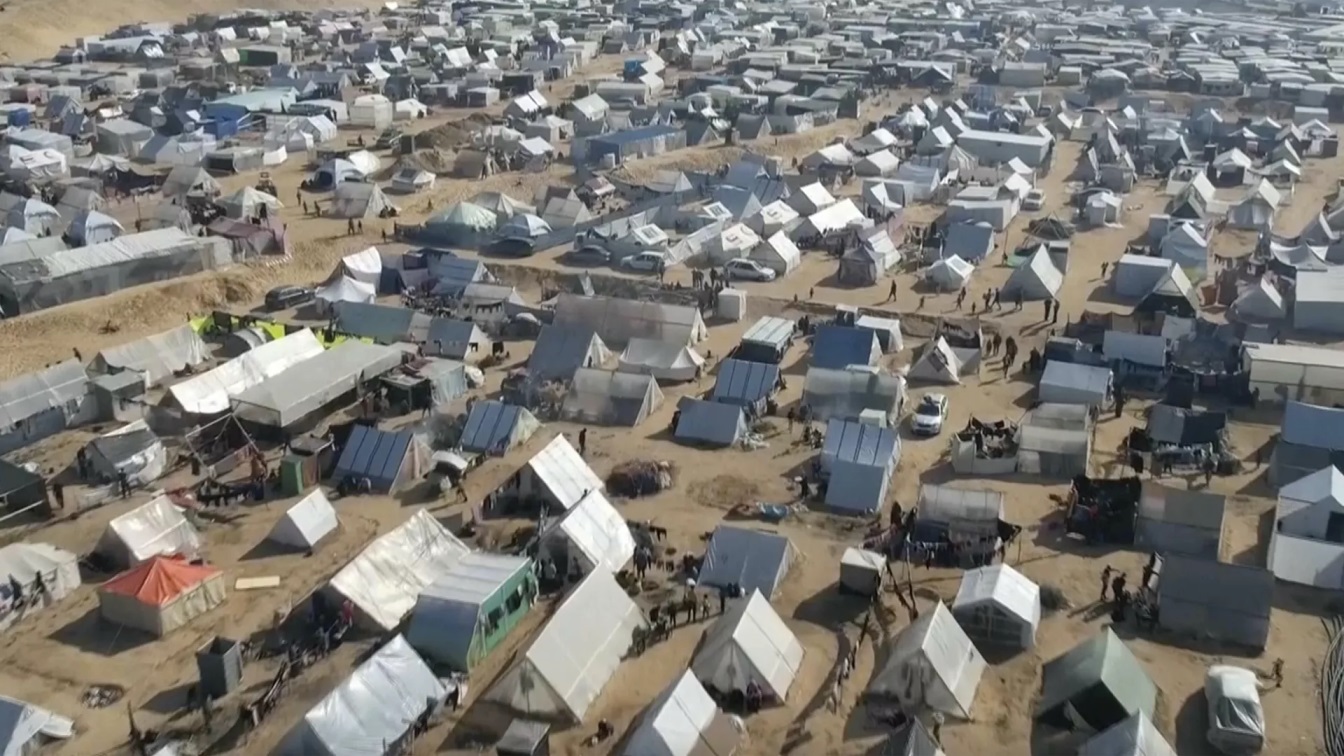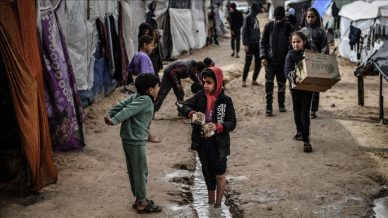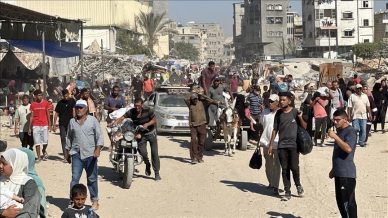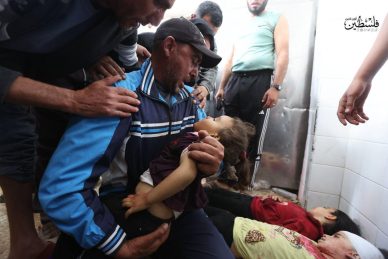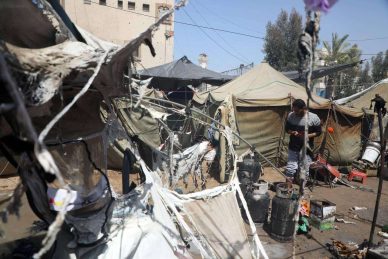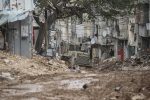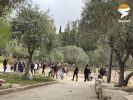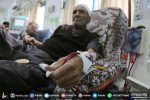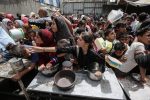GAZA, (PIC)
Once a vast agricultural area covered with sand dunes and greenery, Al-Mawasi has transformed into the largest tent city in the world. It shelters thousands of displaced people who were forcibly uprooted from their homes, bringing with them their pain, stories of suffering, and long exile. The ground they now inhabit has become a grave for their dreams and hopes.
Al-Mawasi stretches along the Mediterranean coast south of the Gaza Strip, about 28 kilometers from Gaza City. It spans 12 kilometers in length and about one kilometer in width, extending from south of Deir al-Balah to Rafah, passing through Khan Yunis.
The origin of the name
Al-Mawasi derives its name from the practice of local farmers extracting water by digging ponds (absorption ponds) to irrigate crops. The area is rich in groundwater and has stood firm with the people of Gaza in their great struggle since October 7. It has shared their resilience while enduring countless airstrikes and massacres by Israeli forces, with the sands swallowing tents and lives in harrowing scenes of violence and hatred.
The total area of Al-Mawasi is about 12,000 dunums (one dunum equals 1,000 square meters), representing around 3% of the Gaza Strip. It consists of sand dunes, known locally as “al-Sawafi” — white desert sands interspersed with fertile agricultural lowlands rich in groundwater.
Al-Mawasi is divided into two geographically connected regions. One part belongs to Khan Yunis Governorate, located in the far southwest of the area, while the other belongs to Rafah Governorate, in the far northwest.
Mostly, Al-Mawasi consists of agricultural land or barren sand dunes. Residential areas are limited, with no more than 100 housing units, barely enough for the original residents. The region lacks essential infrastructure, paved roads, sewage systems, electricity lines, telecommunications, and internet services.
Continuous suffering
The suffering of the displaced in Al-Mawasi is unending. For over a year, its sandy land has housed tents that offer little protection from the scorching heat of summer or the biting cold of winter. Yet, the displaced remain patient, trusting in God’s will, hoping their nightmare will end with a victorious return that will compensate for the hardship of displacement and the loss of their homes.
At the corner of Roni Saleh Street — one of the most well-known streets in Al-Mawasi — stands Hajj Ghanem Abu Ghanem, with his aged face marked by months of pain. He tells our reporter, “We’ve been here for a year, enduring agony, living through unbearable conditions of hunger, thirst, and deprivation, all while resisting the occupation.”
Abu Ghanem recounts his story of displacement from the northern area of Nuseirat camp to Rafah and then to Al-Mawasi in Khan Yunis: “We haven’t slept because of the cold. Every night, the tarps get colder, and the bombing continues in what they call a safe zone. We’re not living; life has become unbearably expensive. The tents provide no shelter from the cold or heat, and every morning the nylon roof is soaked with dew and water. We hear the roaring sea, and our shelter is nearly uprooted. I am the head of a family of six.”
Mahamoud Al-Haddad, another displaced person, was uprooted three times before reaching Al-Mawasi, each time filled with untold pain and stories too difficult to convey through words or images. Hearts are broken, and the waiting is unbearable, but he remains certain that relief is coming and that God will reward them with something beautiful.
Al-Haddad describes the harshness of life: “There’s no food or flour. I’m sick and in need of medicine, but I have nothing to offer myself or my children. A few days ago, when it rained, our tent was flooded. I have no idea what the future holds.”
Umm Jammalat, a mother of two martyrs who were killed in northern Gaza, was never given the chance to say goodbye to them. She says, “They say Al-Mawasi is safe, or it’s where the aid is. But since we arrived, we haven’t had proper sleep or food. No flour is distributed, and there’s no safety. The bombing has increased in every direction. A few days ago, they bombed the area, and the children woke up terrified, running aimlessly.”
Umm Jammalat will never forget what she was deprived of months ago: “My daughters were martyred while I was far from them. They were buried in the north, and I didn’t get to see any of them. But I always say, thank God, He has honored us with them.”
Resilience and patience
Al-Mawasi, along with the stories of the displaced, has its own story of resilience, patience, and waiting. It bore the burden of Israeli settlements for many years. After the 1967 occupation, Israel built settlements on its land, forming the Gush Katif bloc, surrounding the people of Gaza with about 14 settlements.
However, Al-Mawasi also holds the memory of its resistance fighters, recalling 2005 when the last settler left its vast lands, returning the land to its rightful owners. Now, it faces a new challenge as the people of Gaza refuse to let the occupation turn back the clock, standing firm in their motto, “To be or not to be.”
In Al-Mawasi, the people are oppressed and downtrodden, but they are steadfast, patient, and convinced that their struggles will not be in vain. They are certain they will return to their homes and to the lands occupied since 1948.
Al-Mawasi remained a quiet, sparsely populated area until it opened its arms to the people fleeing the inferno of brutal war. Once the breadbasket of Gaza, it has now become a city of displacement, a place of pain and heroism, watered with blood.
Displaced resident Mahmoud Safi recalls the airstrike on Al-Mawasi in July that claimed the lives of around 100 martyrs. He added that this massacre was not the only one; Israeli warplanes and artillery frequently target Al-Mawasi, chasing the displaced people in areas falsely claimed by Israel to be safe.

